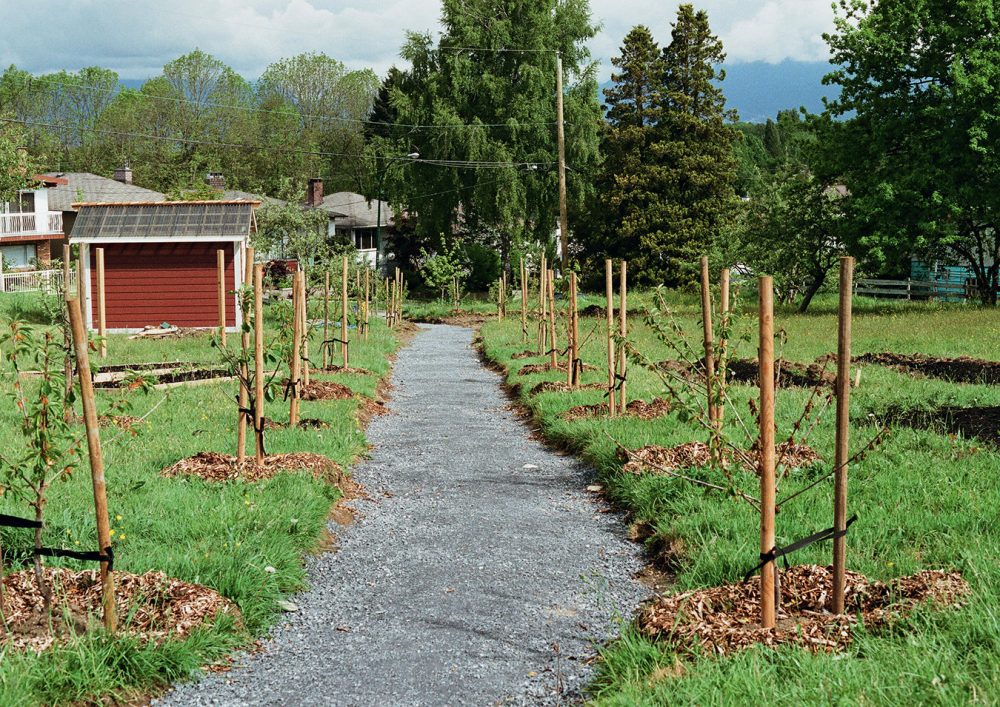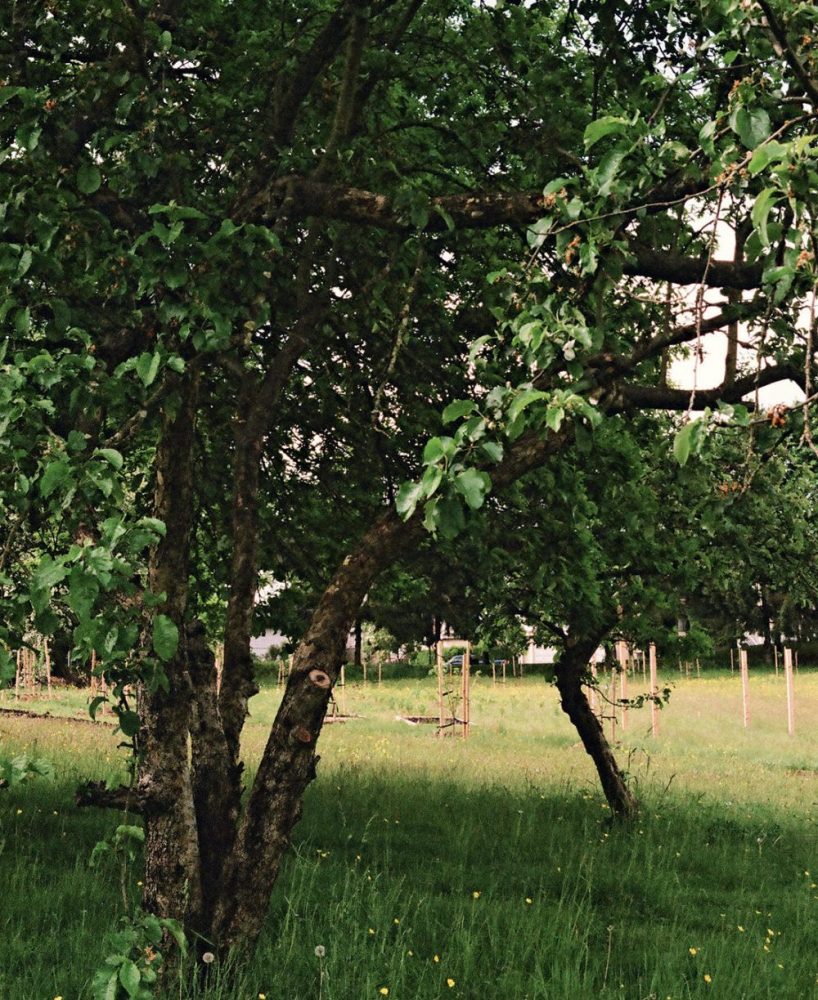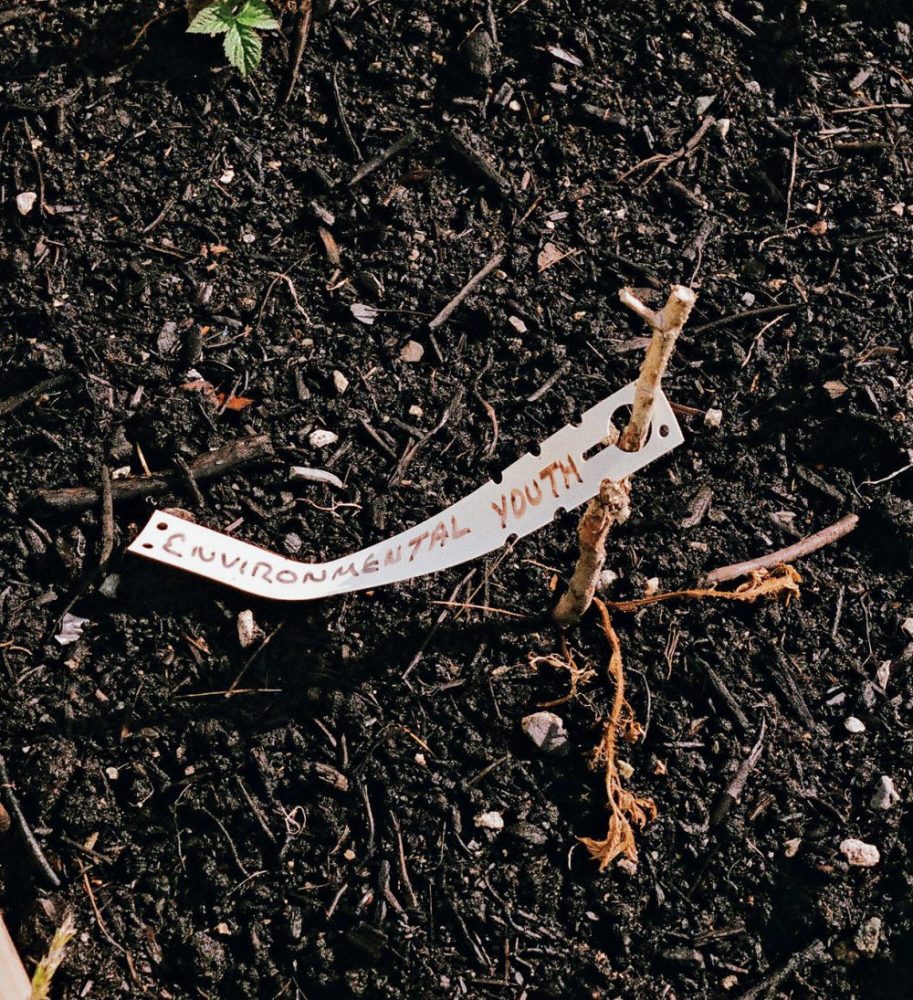Nine knobby apple trees are in bloom in a verdant field as SkyTrains leaving Nanaimo Station rattle overhead. They’re relics of Vancouver’s pioneer history that, surprisingly, still bear fruit.
In 1905, when parts of East Vancouver were still elk hunting grounds, and the old Hastings Sawmill sucked water from Trout Lake to power machinery, Richard Theophilus Copley immigrated to Canada from England and bought a vast acreage bordered west to east by Nanaimo and Rupert Streets, and north to south by East 12th and East 28th Avenues.
The retired leather merchant called his pastoral kingdom Copley Ranch, and built a grand family dwelling, West Green, for his wife, Marie, and their children. The road running between the house and the ranch went on city books as Copley Drive. It’s still there, now Copley Street, a marker of the family’s story.
Surrounded by farm and forest, Copley devoted himself to his orchards, tending apple, cherry, walnut, and plum trees. But as Copley wrote in 1910, “Of all the fruits of the universe—none have the breadth of choice covered by our loved apple. In my garden I have more than 120 different kinds and I am adding to them.” And the Copley roots run deep. Rediscovering the family story means tracing the intertwined histories of the Kensington–Cedar Cottage and Grandview-Woodland neighbourhoods. Many community members used Copley’s land: an Italian neighbour grew tobacco on it, and a Chinese family rented a greenhouse, selling their produce along nearby Commercial Drive, then called Park Drive, where only a mere scattering of general stores existed before it became the urban shopping hub we know today, a product of the First World War. Copley’s own children were part of the first generation to populate the area.
“He was a retired Englishman, loved flowers, had a fine garden, started a little orchard, and used to sell young fruit trees for 10 cents apiece,” Thos A. Greer, a neighbour, reminisced in a 1936 interview. “He did not do it for money—just for the joy of it.”
When Copley passed away in 1917, his children moved back to the land. Doug Copley, Richard Copley’s grandson—now 89 and living in Victoria—was the last generation born in the West Green house, in 1923.
“My grandpa [Doug] always talks about being a kid on this giant property,” says Anna Copley, Richard Copley’s 27-year-old great-great-granddaughter. “One side of the house overlooked cherry and plum trees. East Van changed before his eyes. It was farmland, then houses.”
Around 1940, the family sold the property as subdivisions sprang up around it. Today, one small sliver of the Copley orchard remains remarkably untouched due to a sewer main that runs underground, making the land unsuitable for real estate development. Over the decades, neighbourhood kids took possession of the field, playing baseball games and other sports among the aimlessly falling fruit.
This year, however, the one-acre orchard has begun to spring back to life. An army of local volunteers—from children to senior citizens—have gathered around the surviving trees to industriously plug dozens of new young saplings into freshly dug soil. By 2013, thanks to the combined efforts of the City of Vancouver, the Environmental Youth Alliance (EYA), and the Commercial Drive Business Society, the space, now called the Copley Community Orchard, will bear a full harvest once again.
“What’s most unique about Copley Community Orchard is the collective nature of it,” explains EYA project coordinator Jodi Peters. “Instead of having people maintain individual plots, all the trees planted today will be cared for collectively by the membership, which is about 90 people altogether. Each and every member will reap a share of the harvest.”
The landscape design by Community Studio reflects the group’s desire for a recreational, fruit-bearing orchard park with paths, and a high-yield, trellised area where the EYA will collaborate with youth to realize the potential of organic, urban agriculture. “So far, we’ve planted 65 trees and approximately 100 shrubs,” says Peters, sitting under the old Copley apple trees with a little dirt under her fingernails. “It’s incredibly thrilling to get new tree roots in the ground.”
She rattles off a list: apples of all varieties, plums, pears (Shinseki, Chojuro, Bosc, and Anjou), peaches, blueberries, currants, gooseberries, newfangled honey-berries (a type of honeysuckle altered to bear fruit), grapes, and kiwis will all grow at Copley. “And all the pathways will be lined with edible cherry tree species, including Stella, Glacier, and Evans,” Peters adds.
The group pauses in their work to share their stories of the space. Anna Copley has just moved back to the Commercial Drive area, and she too has become a Copley Community Orchard member—much to the delight of her grandfather Doug.
Empowered as much by the memories of the older generation as the sweat put in by the younger, members of the Copley Community Orchard project will soon enough be able to relish in the fruits of all their labour.












